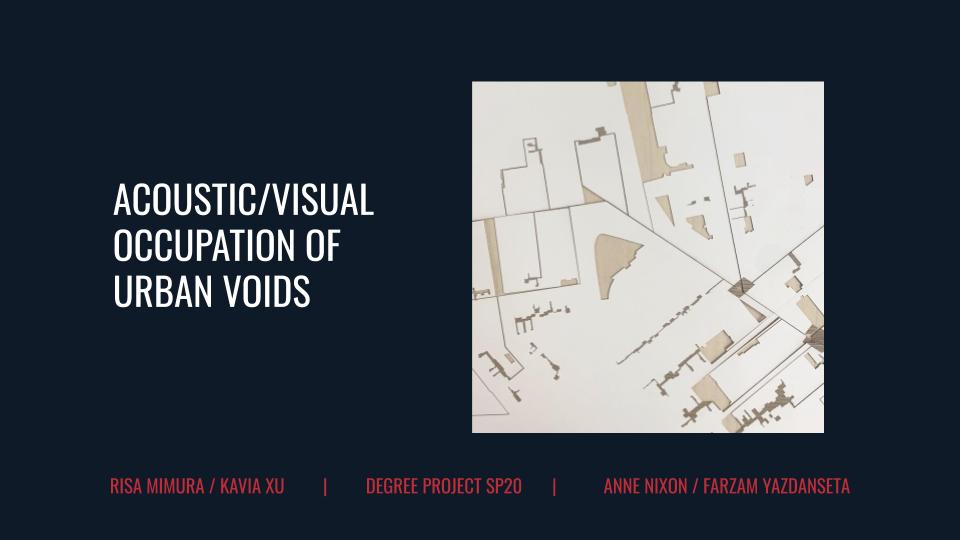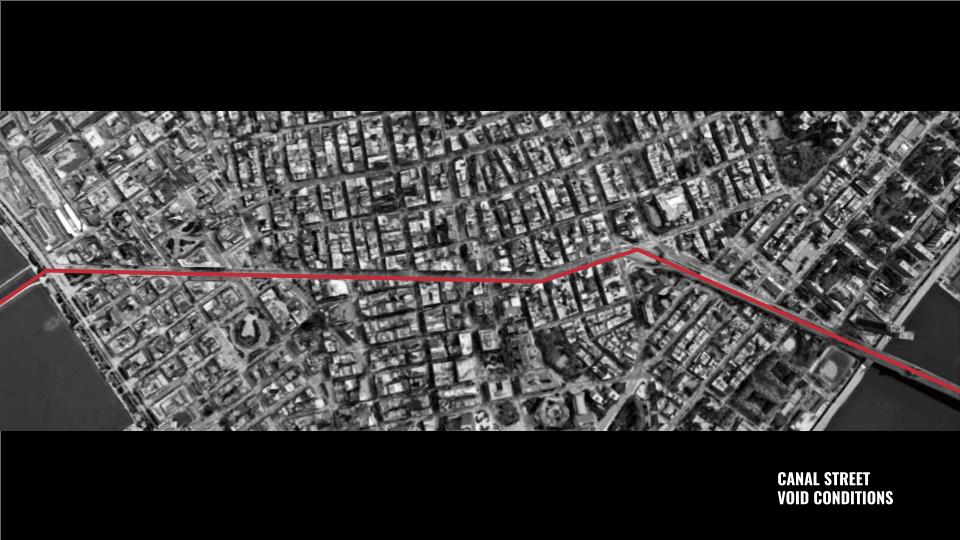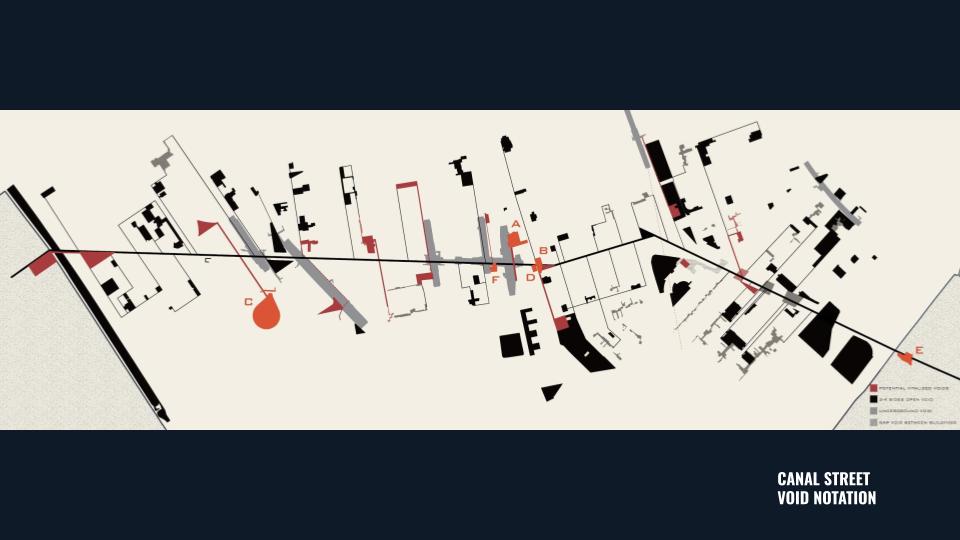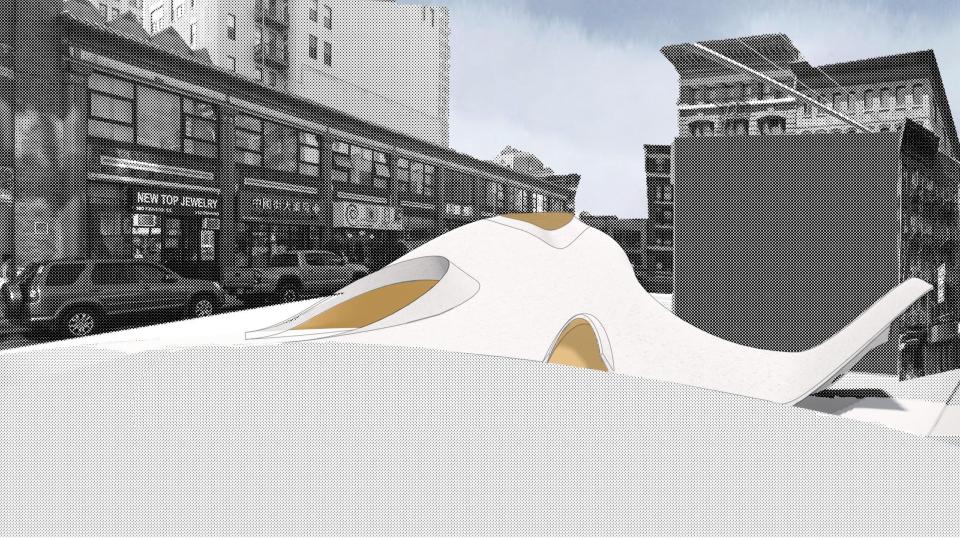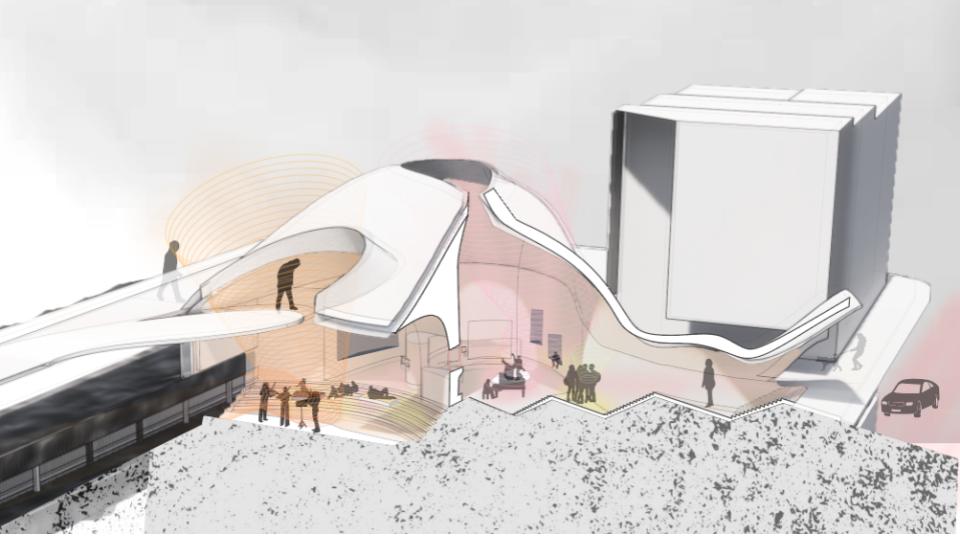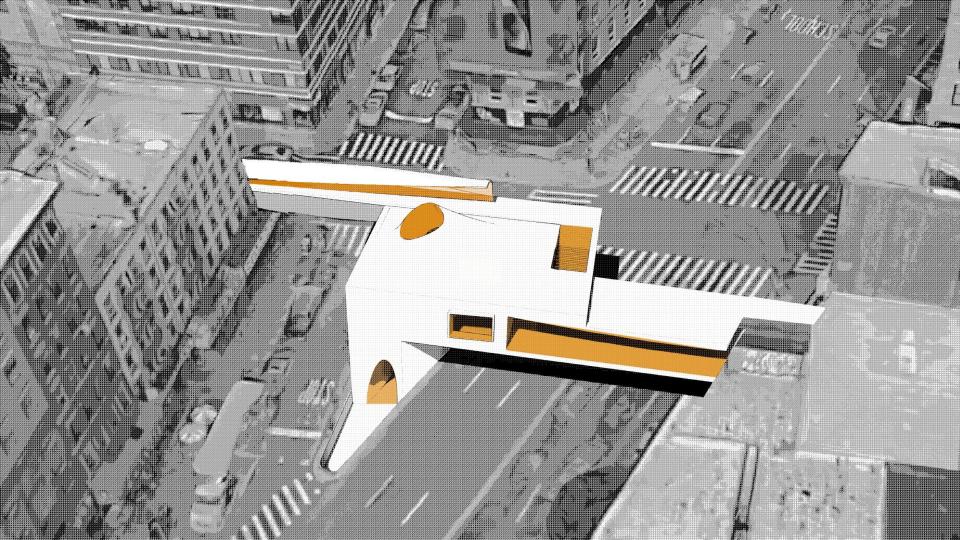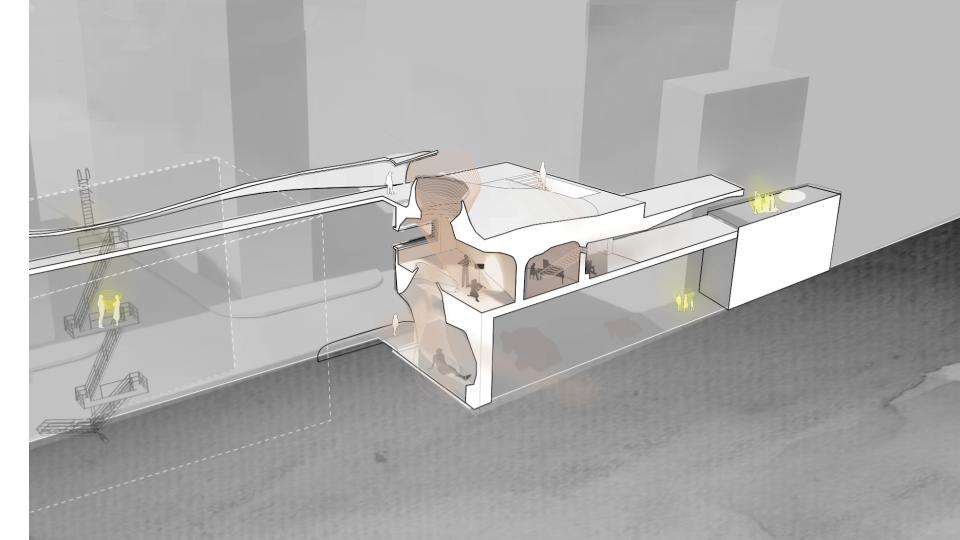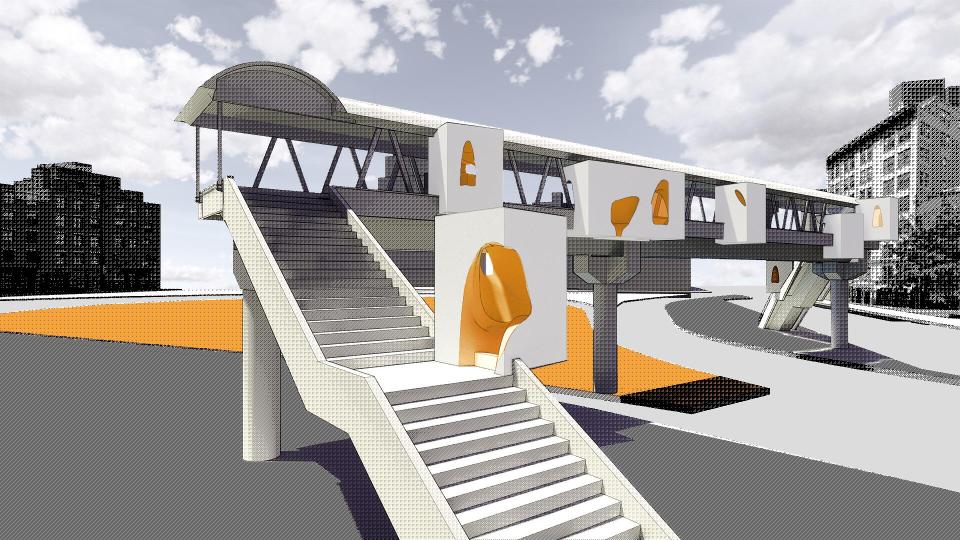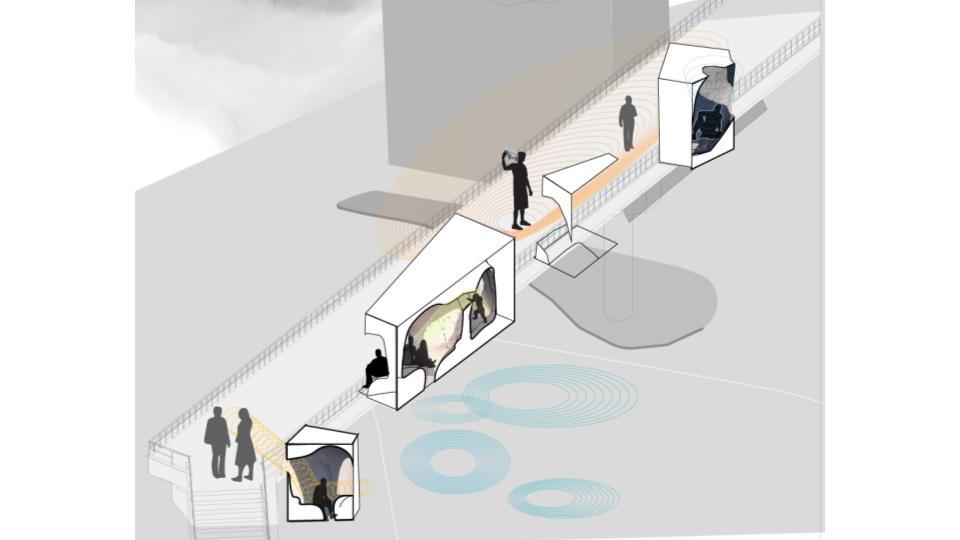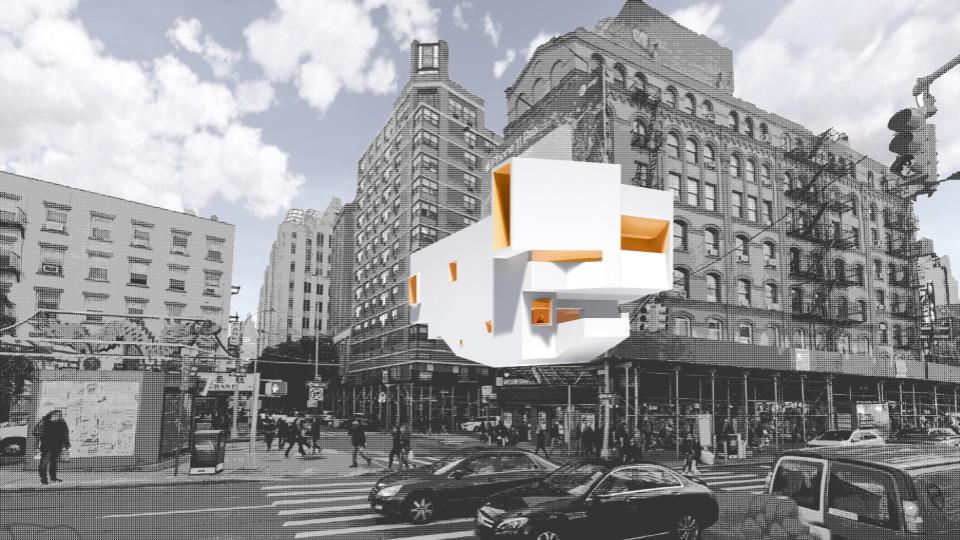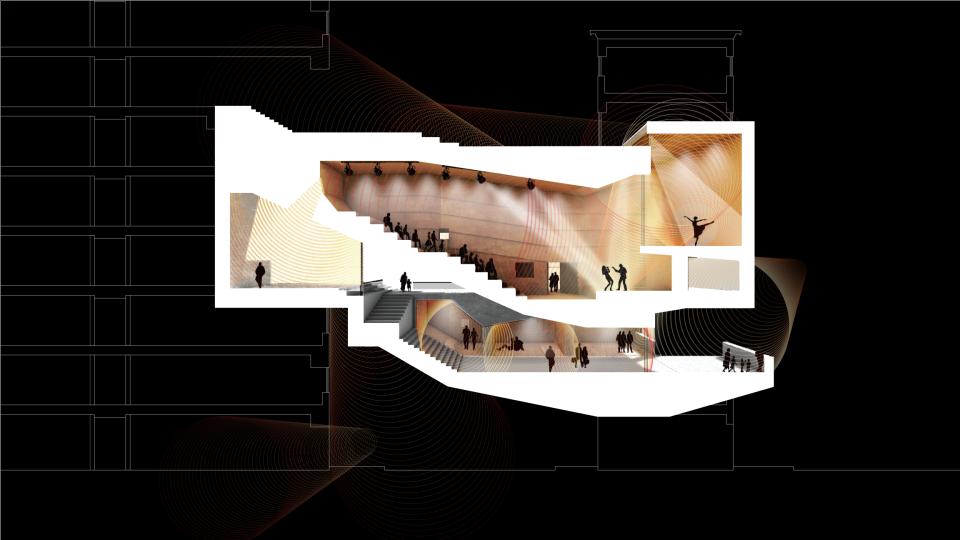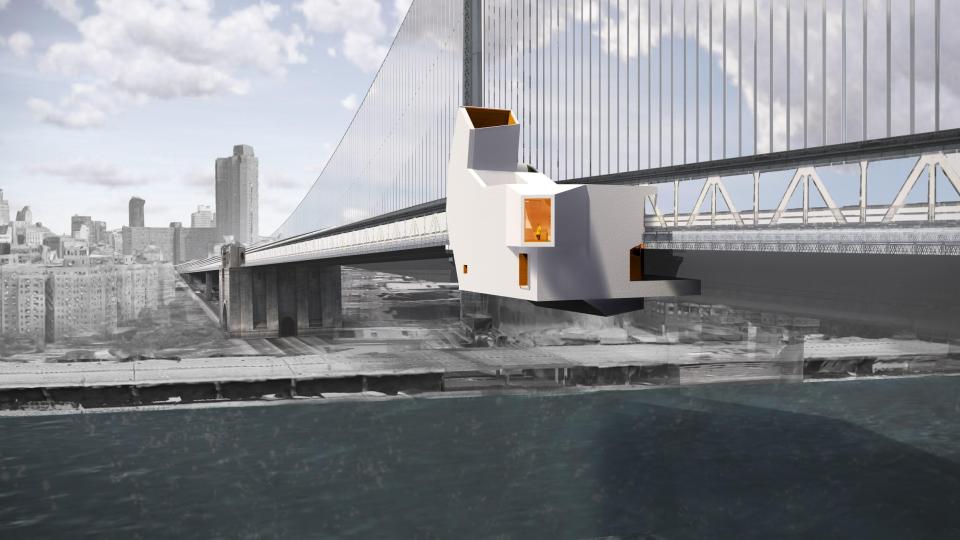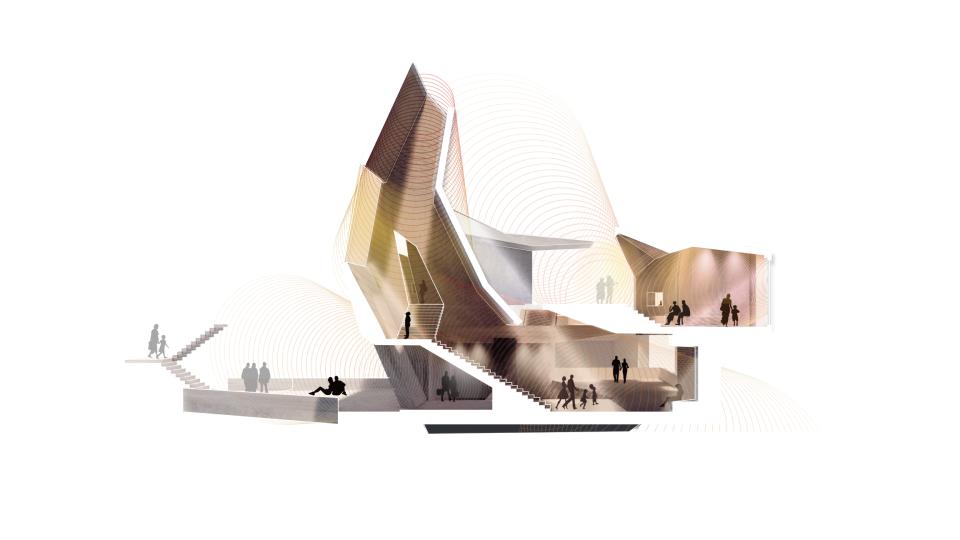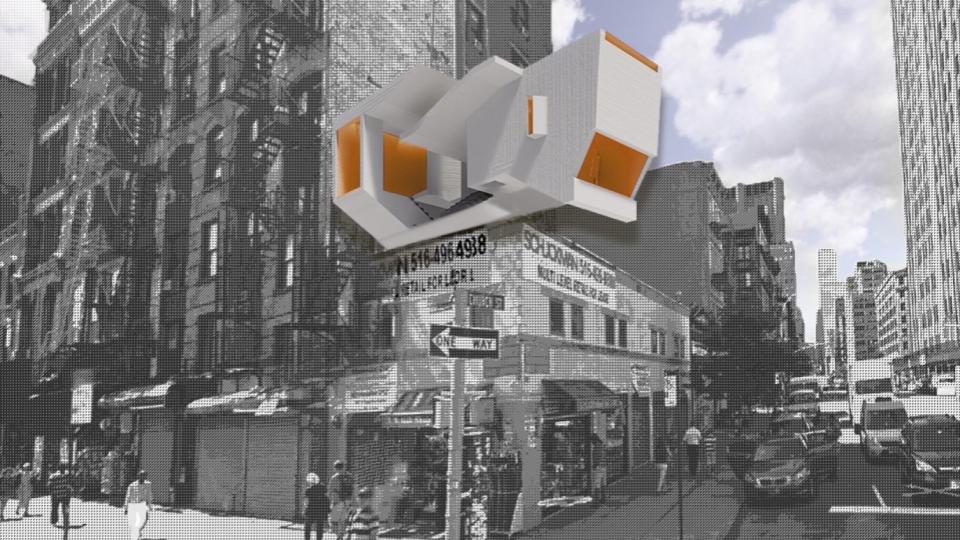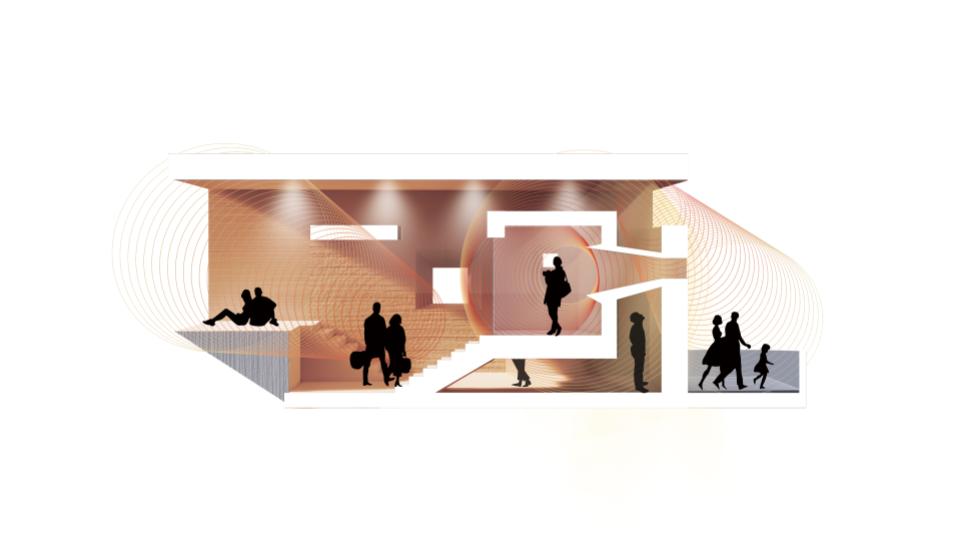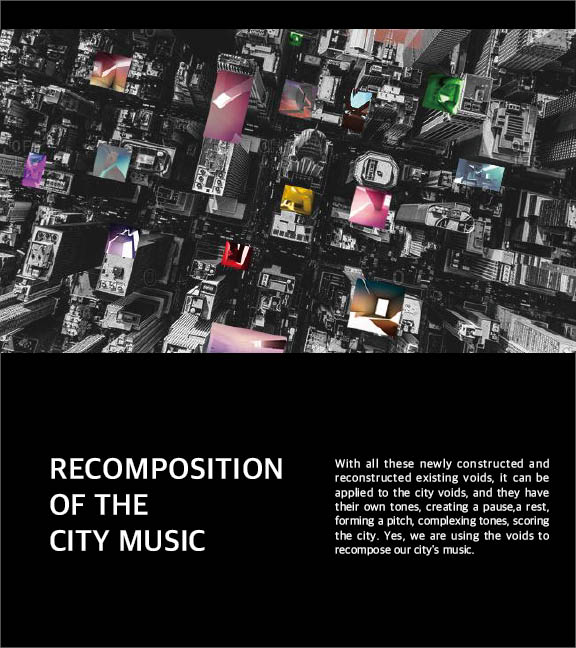ACOUSTIC / VISUAL OCCUPATION OF URBAN VOIDS
The scarcity of space in modern cities stimulated the development of high rises and compressed structures. However, there are fragments of void nested in between the dense urban fabric that is being overlooked of its potential value. The urban voids, like the resting place between the gap of buildings, a small performance area under the bridge, and alleyway, can serve as a breakpoint from surrounding tensions like crowds and traffic. This project aims to create spaces for the public to have phenomenological perceptions of what they consider the familiar everyday experience.
This degree project was accomplished by Risa Mimura and Kavia(Xinyu) Xu.
rmimura@pratt.edu
kavia.xyxu@gmail.com
This degree project was accomplished by Risa Mimura and Kavia(Xinyu) Xu.
rmimura@pratt.edu
kavia.xyxu@gmail.com
Artist Statement
Six locations with different combinations of the voids are selected along Canal Street from Hudson River to East River. Three scales, large, medium, and small, are introduced to this project. Six locations are transformed into performance spaces expressing the ethereal ideas of sound and light.
The research of evolution and functions of subterranean architecture was conducted in the previous semester to rethink the role that existing underground networks play in city infrastructure. With the densification of the modern city fabric, abandoned underground structures have the potential to become new public spaces. Being underground allows a moment that alternates the perception of time, space, and light—a series of spaces that phenomenologically allows heightened sensory perception of sound, light, and haptic experiences.
From the research of the fishbone neighborhood structure "Lilong" in Shanghai, China last semester, the idea of the continuous social structure which is beneficial to the social relationship is applied to this project. The public is sharing the lanes and consider these shared areas as public living rooms. Through the study of the void of housing typology "shikumen," the essence of the front courtyard blurs the boundary of the public and private, becoming a transition zone from exterior to interior.
To change the visitors' preconception of the site, Canal St, we aim to preserve the vitality and existing sound input from the street. We are revitalizing the unused voids to create a detour or moment for a pause along the path, forming a more elastic urban planning form. The existing void spaces are divided into three categories: existing planning voids like street and open park; functional voids like the gap in between the building blocks, alleyways, and abandoned underground space; geographical voids like rivers. In addition to the existing voids, more operations like taking the interior hallway, carve and punch through the existing building are applied to create more voids. With all these newly constructed and reconstructed existing voids, six locations are further developed.
Location A, sound pond, is a large collective scale carved underground performance space adjacent to the subway track. Location B, sound bridge, is an intermediate scale unique music practice and recording studio that floats above canal St. Location C, sound pocket, is an individual scale performance space, streaming the performance from the rest of the performance spaces. Location D, sound window, is an intermediate scale formal performance space for opera. Location E, sound scope, is an intermediate scale informal performance space, playing the recorded natural sound from the Hudson River and East River. Location D, sound tree, is a small scale sound collection space where the visitor can hear themselves and submit their unique sound experience.
The research of evolution and functions of subterranean architecture was conducted in the previous semester to rethink the role that existing underground networks play in city infrastructure. With the densification of the modern city fabric, abandoned underground structures have the potential to become new public spaces. Being underground allows a moment that alternates the perception of time, space, and light—a series of spaces that phenomenologically allows heightened sensory perception of sound, light, and haptic experiences.
From the research of the fishbone neighborhood structure "Lilong" in Shanghai, China last semester, the idea of the continuous social structure which is beneficial to the social relationship is applied to this project. The public is sharing the lanes and consider these shared areas as public living rooms. Through the study of the void of housing typology "shikumen," the essence of the front courtyard blurs the boundary of the public and private, becoming a transition zone from exterior to interior.
To change the visitors' preconception of the site, Canal St, we aim to preserve the vitality and existing sound input from the street. We are revitalizing the unused voids to create a detour or moment for a pause along the path, forming a more elastic urban planning form. The existing void spaces are divided into three categories: existing planning voids like street and open park; functional voids like the gap in between the building blocks, alleyways, and abandoned underground space; geographical voids like rivers. In addition to the existing voids, more operations like taking the interior hallway, carve and punch through the existing building are applied to create more voids. With all these newly constructed and reconstructed existing voids, six locations are further developed.
Location A, sound pond, is a large collective scale carved underground performance space adjacent to the subway track. Location B, sound bridge, is an intermediate scale unique music practice and recording studio that floats above canal St. Location C, sound pocket, is an individual scale performance space, streaming the performance from the rest of the performance spaces. Location D, sound window, is an intermediate scale formal performance space for opera. Location E, sound scope, is an intermediate scale informal performance space, playing the recorded natural sound from the Hudson River and East River. Location D, sound tree, is a small scale sound collection space where the visitor can hear themselves and submit their unique sound experience.
